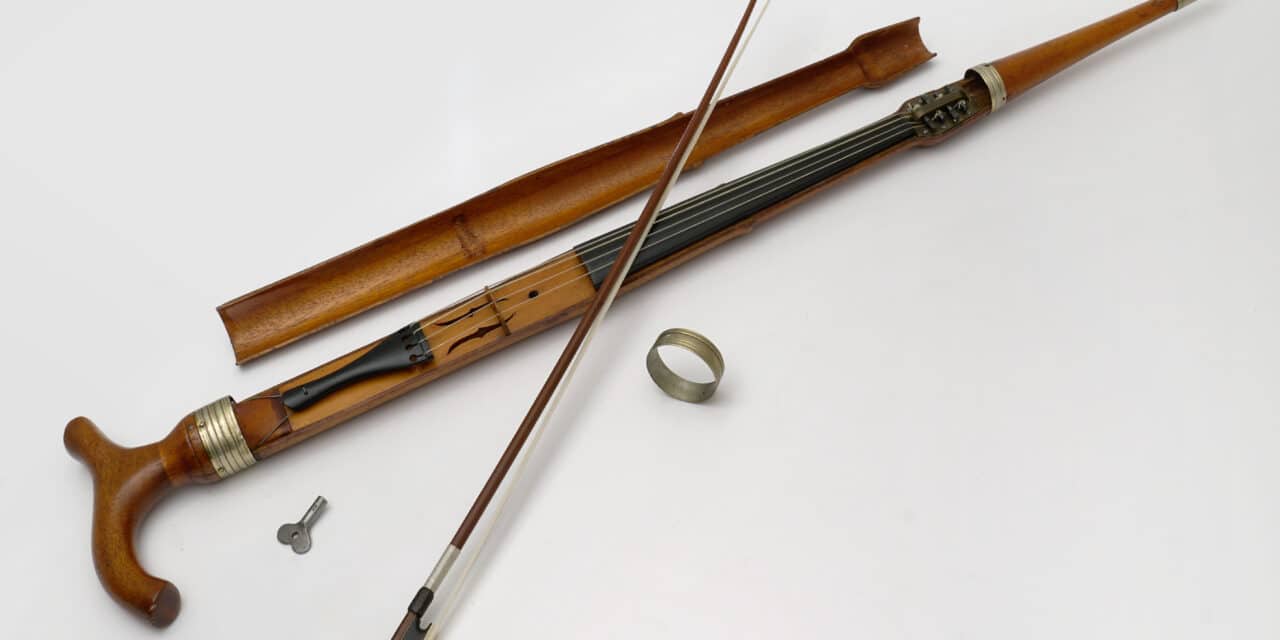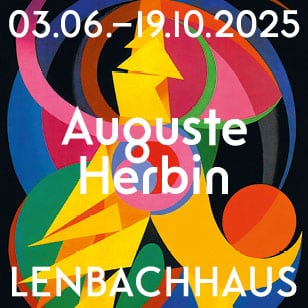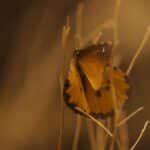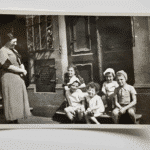From Sunday, March 30, 2025, the Knauf Museum Iphofen presents the special exhibition "Cane Dance - Walking Sticks from Three Centuries". While the walking stick has always been a tool for people, its role changed in the 18th century. It became a fashionable accessory, and even more so a status symbol of the aristocracy as a walking stick. This opened up all doors to artistic craftsmanship. In addition to everyday items, remarkable walking sticks were made from wood, with silver handles or as a sophisticated system with hidden extravagant functions, such as a violin stick or the antique walking stick with telescope. "Stocktanz" presents an exquisite selection from the extensive Dennerlein collection. Precious woods, silver, gold, precious stones, ivory or coral show the wealth of the owner or commissioner of a walking stick. The materials and design also tell stories about the production and historical background against which the canes were created.
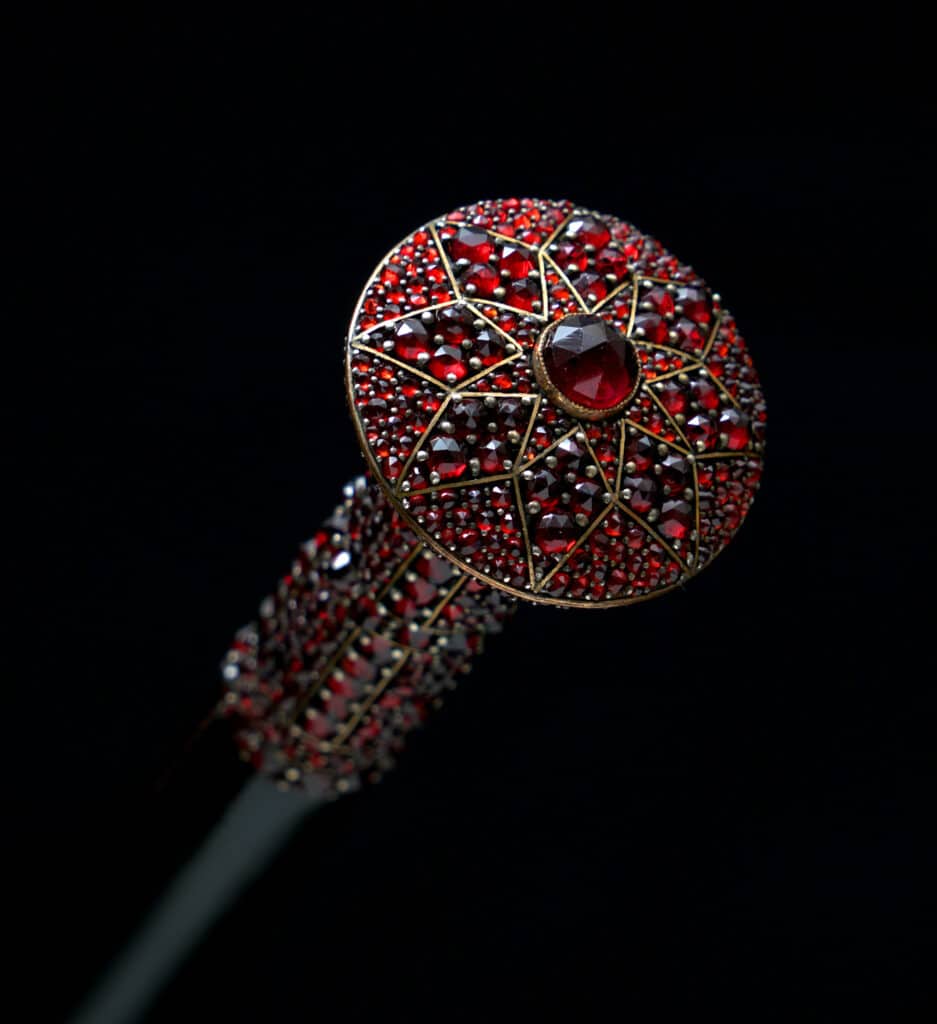
Strolling stick with studded cap handle made of Bohemian garnets, Austria-Hungary, around 1870/80, total length: 91 cm, pommel: l. 7.4 cm, Dennerlein Collection, photo: Benedikt Feser
A status symbol through the centuries
The 18th century saw the beginning of the walking stick's journey as the aristocracy's central status symbol for promenading. With elaborate decorations and made of fine materials, they reflected the status and fashionable taste of their aristocratic owners. Walking sticks experienced their heyday in the 19th century, when the rise of the bourgeoisie made them indispensable companions. The accompanying industrialization enabled the mass production of walking sticks, making them accessible to a wider section of the population. The Sunday walk also became popular with craftsmen and workers around 1850, and the walking stick became an essential part of everyday clothing on the streets. Decorative purposes came to the fore in the fin de siècle. It was not until the 1930s that walking sticks lost their importance again. However, the pieces from the past three centuries soon developed into popular and often very valuable collector's items. Walking sticks are still made to individual specifications in manufactories today.

Exclusive cane with poppy flower motifs and inlaid coral cabochon, France Art Nouveau around 1900, total length: 99 cm, handle height: 8.2 cm, Dennerlein Collection, Photo: Benedikt Feser
The walking stick between aid, design and special function
The handle as the upper end of the walking stick serves first and foremost as a hand support, which can be more elaborately designed for a walking stick than for a stick that is only intended to fulfill its function as a walking aid. The shaft or "weft" can be thinner, the decorative elements more elaborate. The variety ranges from pommel to double crutch to figure handle, and the design of the individual pieces was dominated by animal heads, female and male heads or bodies or ornaments typical of the period. While wood was the most common material, the spectrum of handles ranged from ivory and other types of bone to bone, antlers and horns as well as mother-of-pearl on a wooden core to porcelain, glass, enamel, amber, precious stones or precious metals. For example, an Art Nouveau element from Paris from around 1900, used both as a cane and umbrella handle, shows a girl's head made of silver with a headdress sweeping backwards as a handle, decorated with mistletoe and white berries in plique-à-jour enamel in the style of Art Nouveau. A delicate bust of a woman in the Commedia dell'Arte style, turning towards her owner with a rose in her hair, comes from the Nymphenburg porcelain manufactory; the original was made by Franz Anton Bustelli, who was considered one of the most important porcelain artists of the Rococo period, and was reissued as a knob several times over the course of the 20th century.
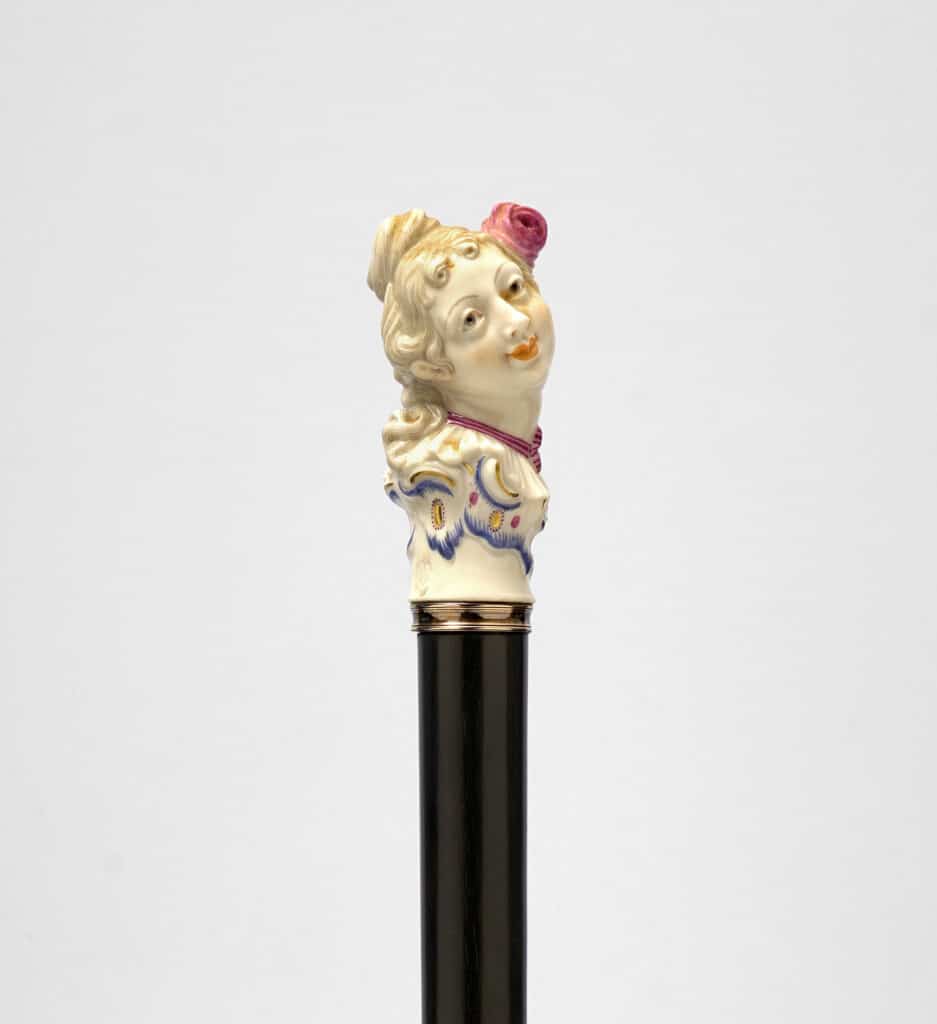
Italian porcelain bust of a woman with a rose in her hair, Germany, 20th century, total length: 98 cm, pommel: h. 8 cm, Dennerlein Collection, photo: Benedikt Feser
Walking sticks with special functions, so-called system sticks, form a separate category. Mainly in the second half of the 19th century, a wide variety of items were incorporated into the canes, such as telescopes, sextants, boxes, musical instruments and many more. The violin integrated into the cane with a slender resonating body and bow in the weft, which can actually be played, comes from a Viennese workshop. Around 1900, in the service of photography, the walking stick even became a tripod for modern photography outside the studio in nature, as a camera could be screwed on instead of the knob and the weft opened up into three tripod legs.
March 30 to July 6, 2025
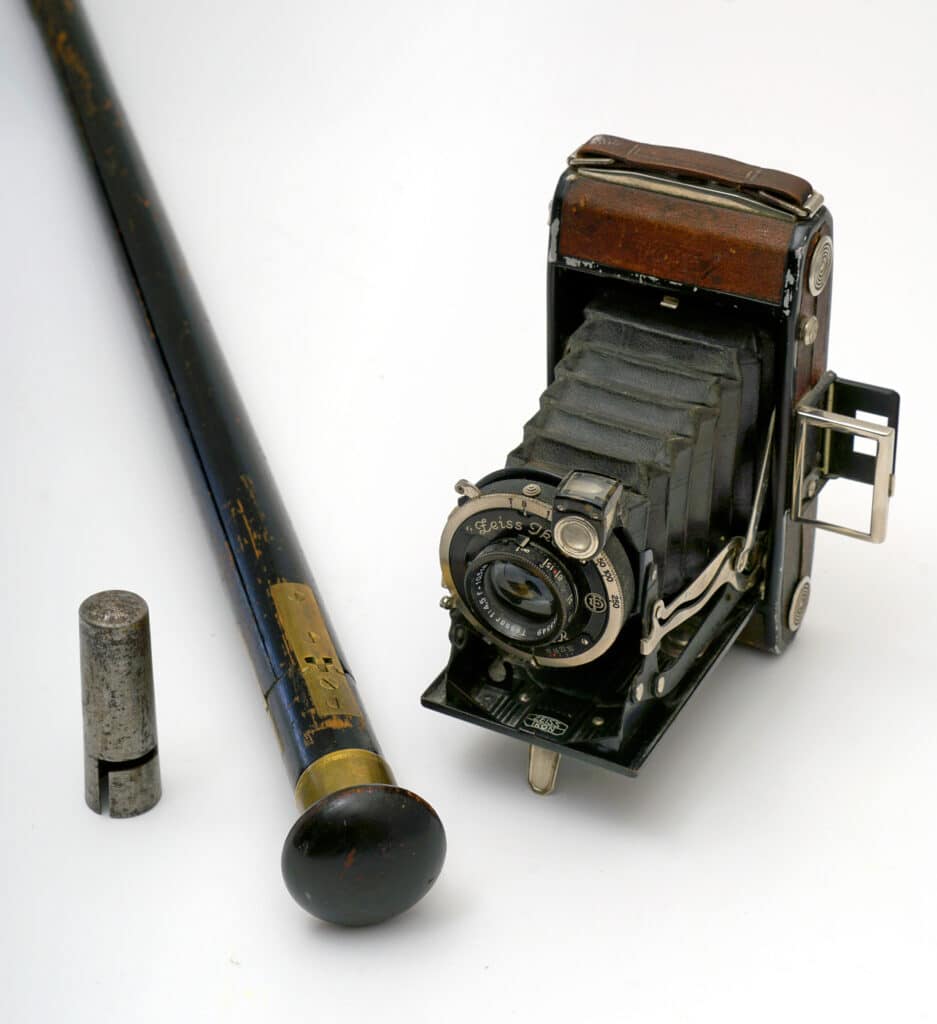
Walking stick with system, integrated photo tripod, Germany, around 1900, total length: 94.5 cm, diameter: 4.5 cm, tip: 7 cm, Dennerlein Collection, photo: Benedikt Feser
The Knauf Museum Iphofen
At the end of the 1960s, plaster manufacturer and patron of the arts Dr. Alfons N. Knauf began converting a magnificent baroque building from 1688 in Iphofen into a private museum. Dr. Knauf, who was fascinated by the study of plaster throughout his life, spent ten years traveling the world's major museums together with his brother Karl Knauf, collecting plaster casts of their most exclusive exhibits. Today, the Knauf Museum Iphofen presents over 200 replicas of the renowned museum pieces from all over the world. Since its opening on June 30, 1983, visitors have been able to marvel at relief collections from the great cultural epochs of mankind, dating back to 3,500 BC. In addition to the permanent exhibition, the Knauf Museum Iphofen regularly develops exclusive and unique special exhibitions on its own initiative. The museum cooperates with numerous internationally renowned art museums.
www.knauf-museum.de

Knauf Museum Iphofen, Photo: Wolf-Dietrich Weissbach

